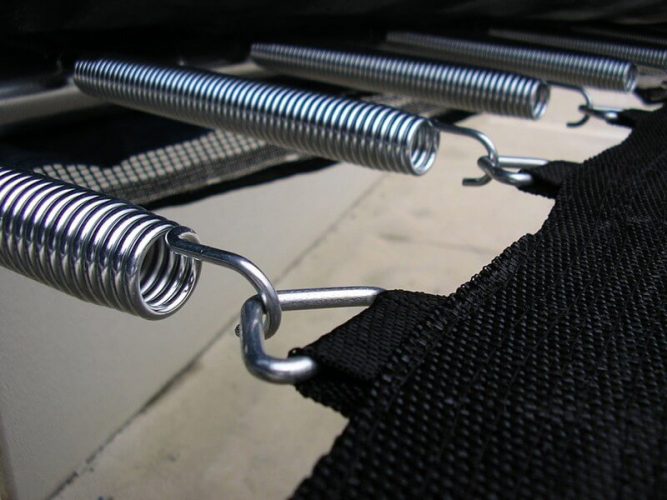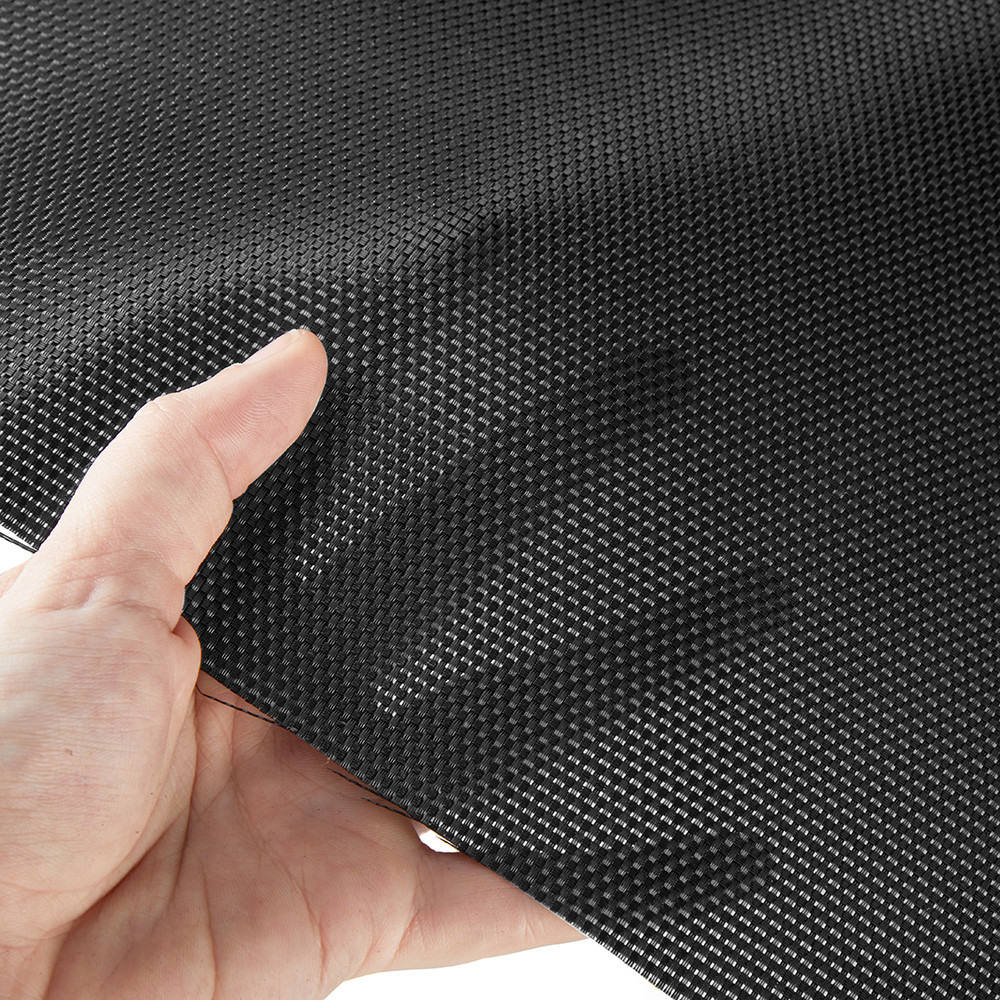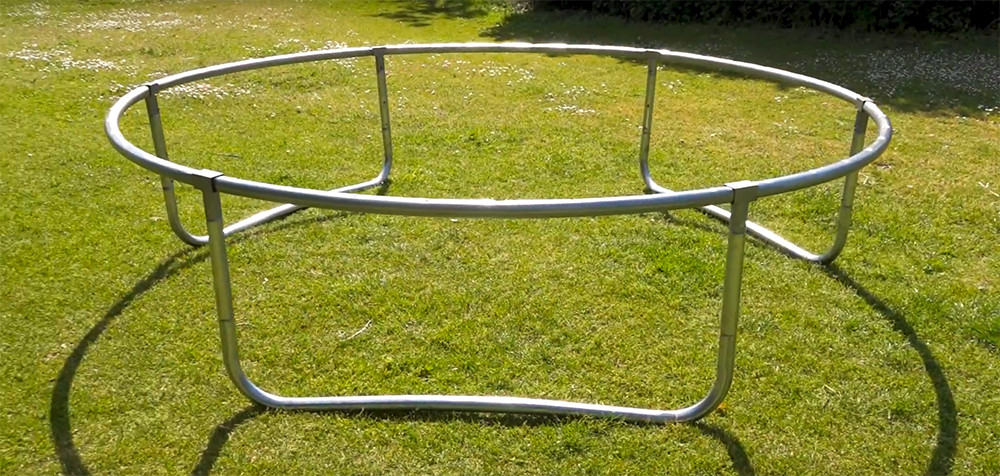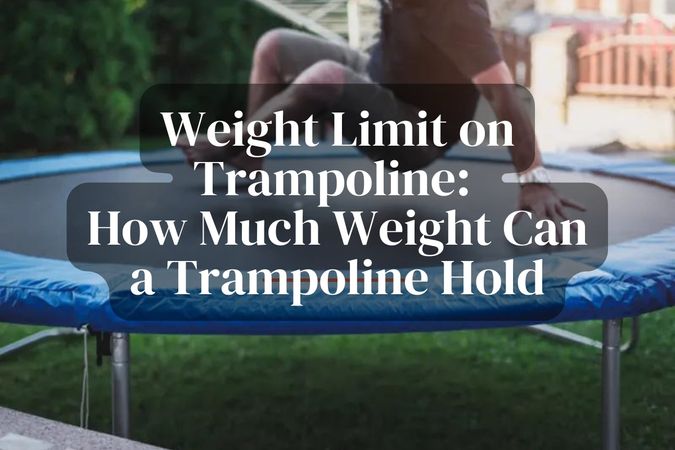Are you planning to set up a trampoline in your backyard? Now, you’re in deep waters of the weight limit on a trampoline: how much weight can a trampoline hold!
Depending on the size, shape, spring quality, and construction material, trampolines can hold anywhere between 65-500 lbs. of weight. Mini bouncers can withstand 50 – 100 lbs., 7-14 ft. units can hold 100 – 300 lbs., and 14 – 17 ft. units come with a weight limit of 300-400 lbs. or higher.
However, if you want to go deep into the weight capacity of different-sized trampolines and the factors determining the weight limit, check this article out!
Weight Limit of Standard Trampoline
The weight capacity of a trampoline mainly depends on its shape and size, along with a few other factors which will be discussed in the coming section.
Here, we’ve designed a typical weight limit chart that’d give you a good idea about the size and shape you should go for.
But before you go through the chart, you should know that the weight capacity varies from brand to brand.
For example, a 14 ft. round trampoline from Vilax has a weight capacity of 330 lbs., whereas another same-sized unit from JUMPZYLLA can deal with 450 lbs.
That being said, typically, 14 ft. trampolines come with 300 – 330 lbs. capacity and anything different will be an exception.
However, when you’re purchasing a trampoline, make sure to check the weight capacity of that item from its manufacturer to be on the safe side.
| Size | Shape | Maximum Weight Capacity |
| 36-inch bouncers | Round | 50 – 60 lbs. |
| All other mini bouncers | Round | 80 – 100 lbs. |
| 7 feet | Round | 100 lbs. |
| 8 – 10 feet | Round | 175 lbs. |
| 12 feet | Round | 250 lbs. |
| 14 feet | Round | 300 lbs. |
| 15 feet | Round | 350 lbs. |
| 16 feet | Oval | 350 lbs. |
| 17 feet | Oval | 400 lbs. |
| 12 – 13 feet | Square | 250 lbs. |
| 14 – 15 feet | Square | 300 lbs. |
| 16 feet | Square | 350 lbs. |
| 14 -15 feet | Rectangle | 250 lbs. |
| 17 feet | Rectangle | 400 lbs. |
Factors Influencing the Weight Limit on a Trampoline
As said before, there are several factors that affect the weight limit on a trampoline, and among all, the following are the most crucial ones. Have a look.
Spring Quality
Even though it seems like the jumping mat or mesh handles most of the weight in a trampoline, it does not. The majority of the weight is handled by the springs, and nothing affects the weight capacity as much as them.
The most popular type of spring for trampolines is coiled springs, as they provide good bounciness and elasticity. Coiled springs are mostly made of metal, and sometimes they are even galvanized for better strength.

Apart from the material, the spring length also plays a crucial role. Small and thick springs can withstand heavy weight but deliver less bounce. In contrast, larger springs have less weight capacity but can provide a better bounce.
Moreover, the number of springs used in the trampoline is also a determinant of the weight limit. More springs will increase the trampoline’s weight capacity.
Mesh Material
The thing over which people jump and land is called the trampoline mesh. It is also known as a jumping mat or pad. And it is the second thing that greatly affects the weight capacity of a trampoline. The better the mat quality, the higher weight it can deal with.

Woven fiber and waterproof canvas are some of the top-notch materials for trampoline mesh, which can withstand heavy weight. Fabric materials are also used in trampolines, but for optimum performance; the weaving quality needs to be premium. Otherwise, it won’t last long.
Apart from these, there are polyethylene and nylon fiber jumping mats as well, which are not as good as woven fiber and canvas.
Size
As mentioned earlier, the higher the trampoline size, the higher its weight limit will be. A 3 – 4 ft. trampoline can deal with 60 – 90 lbs. And 7 – 10 ft. units have a weight limit of 100 – 170 lbs. That being said, you might see small-sized trampolines coming with high weight limits occasionally, which are exceptions.
Shape
The shape of a trampoline also slightly influences the weight limit. Round or circular shapes have better weight capacity than square ones. But oval and rectangular-shaped trampolines usually come with a higher weight capacity.
Frame
As for frames, the quality and shape of the frame affect both the weight capacity and the stability of a trampoline. Steel-constructed trampoline frames are highly durable; hence they can withstand heavy weight. For good stability, the frames need to be constructed well too.

Conclusion
So, what’s the weight limit on trampoline? How much weight can a trampoline hold?
In a nutshell, a trampoline’s weight capacity depends on various factors. And going through this entire blog should now give you a crystal clear idea. Yet, no matter what, you should always consult the manufacturer or seller before getting yourself a trampoline.
Frequently Asked Questions
Can you be too heavy for a trampoline?
Yes, you can be too heavy for a trampoline with less weight capacity than needed. As a rule of thumb, you should pick a trampoline that can withstand twice your body weight.
What happens if you go over the trampoline weight limit?
If the trampoline’s weight limit exceeds, that can shatter the jumping mat, buckle the frame, and can cause the spring to break.
Can adults jump on a 12 ft. trampoline?
Generally, a 12 ft. round trampoline can withstand up to 250 lbs. of weight. Therefore, an adult of 125 – 140 lbs. body weight can jump on it.
Can you have two people on a trampoline?
Two people can jump on the trampoline together if the trampoline has a suitable weight capacity. But it is not recommended at all, as it can lead to injuries.
Last Updated on August 25, 2023

